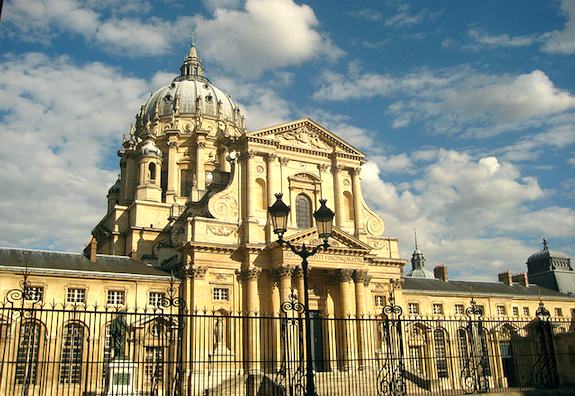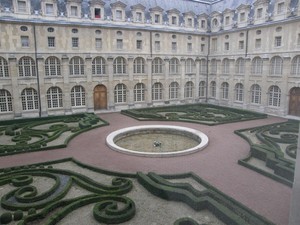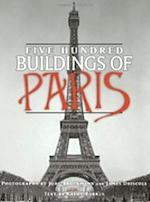Val-de-Grace in Paris: Best-Kept Secret

- SUBSCRIBE
- ALREADY SUBSCRIBED?
BECOME A BONJOUR PARIS MEMBER
Gain full access to our collection of over 5,000 articles and bring the City of Light into your life. Just 60 USD per year.
Find out why you should become a member here.
Sign in
Fill in your credentials below.

Val-de-Grâce
If the crowds at the major tourist sights are starting to get to you, and you crave peace, space and light, take the RER to Port Royal, walk up the boulevard St. Michel to the rue du Val-de-Grâce, and look for a huge dome between the buildings. Walk toward the dome and prepare for a visit to the days when Louis XIV was a boy.
The Val-de-Grâce complex includes a modern military hospital on the east side of the property, separated from the original buildings by a large garden. The older buildings have been flawlessly restored and consist of a church, the museum, and a library, all open to the public. There is also a medical school for the military in one wing and on the upper floors, apartments for senior military personnel.
The whole thing was built as a thank you gift. Anne of Austria, wife of Louis XIII, commissioned it after the birth of her son in 1638 (the child went on to become Louis XIV, the Sun King). The birth seemed like a gift from God. The queen had had several miscarriages; and her relationship with her husband had never been good.
The queen prayed desperately to her namesake Saint Anne. Finally, when she had reached the ripe old age of 37 and was close to giving up hope, she gave birth to a son. Something this momentous demanded a suitable token of the queen’s gratitude, so she summoned the best architects in France and commissioned a Benedictine monastery, complete with a domed church. Construction began in 1645. By this point, Louis XIII was dead, Louis XIV was only seven, and Anne was in charge, as Regent. She used her power to get the huge complex built.
The original design was by François Mansart. He was later kicked off the job for going over budget (sound familiar?), but the building was completed following his plans.
The first part you will encounter is a museum devoted to the history of military medicine, the Musée du Service de Santé des Armées. It is interesting in its way, but many visitors head for the beautiful church under the dome.
At the front of the church is a baldaquin rather like the one in St. Paul’s Rome. This is a canopy over the altar with distinctive twisted columns, intended to represent the rustic stable in which Jesus was born. Huge marble statues represent the Nativity scene, with a clearly delighted Mary and Joseph admiring their baby boy. The parallel is not subtle; for Anne, the birth of Louis was on par with that of Jesus.
Overhead is an elaborate painting in which Anne of Austria and her patron, Saint Anne, can be seen. The queen is carrying a small replica of the Val-de-Grâce. It was so close to her heart that when her son was fully established on the throne, she retired there to live.
There is a splendid organ, and organ recitals are held once a month to show off the instrument.
The marble floor features fleur-de-lys, and the initials A and L for Anne and Louis are everywhere. Wait a minute…would that be Louis XIII or Louis XIV?
In 1793, during the Revolution, the Benedictines were evicted and the place became a military hospital. Considering its spaciousness and sense of calm, you could probably do much worse in the late 18th century if you were recovering from war wounds.
 The quiet cloister surrounds a formal garden. At one corner, a staircase goes up to the library. The lucky med students have their choice of a reading room with tables overlooking the main garden, or a sunny spot with comfortable chairs overlooking the cloister.
The quiet cloister surrounds a formal garden. At one corner, a staircase goes up to the library. The lucky med students have their choice of a reading room with tables overlooking the main garden, or a sunny spot with comfortable chairs overlooking the cloister.
Take your time and wander through the spaces made of golden stone. Because the place is so quiet, the staff and guards actually seemed pleased to have visitors, and readily answer questions.
It’s open Tuesday, Wednesday, Saturday and Sunday from noon to 5 p.m. In any other city, this would be a must-see place on the tourist circuit, but in Paris, it’s a well-kept secret. Pass it on.
PRACTICAL INFORMATION:
15, rue Val de Grâce, Paris 5th
Open: 12-5pm Tuesday, Wednesday, Saturday, Sunday
RER Port-Royal or Luxembourg
Bus 38, 83, 91

PHOTO CREDITS: photos by author except large photo on top ©Guillaume Cattiaux
Philippa Campsie, with her husband Norman Ball, writes the blog Parisian Fields that covers everything from Paris history to today’s street scenes. Please click on her name to read more of her stories published here and to learn more about her.
![]()
Subscribe for FREE weekly newsletters with subscriber-only content.
BonjourParis has been a leading France travel and French lifestyle site since 1995.
Readers’ Favorites: Top 100 Books, imports & more at our Amazon store
Learn more about French architecture and art…please click on an image for details.
Thank you for using our link to Amazon.com…we appreciate your support of our site.
More in Cafe, Hotels, Monument, Neighborhood, Paris, Shopping






